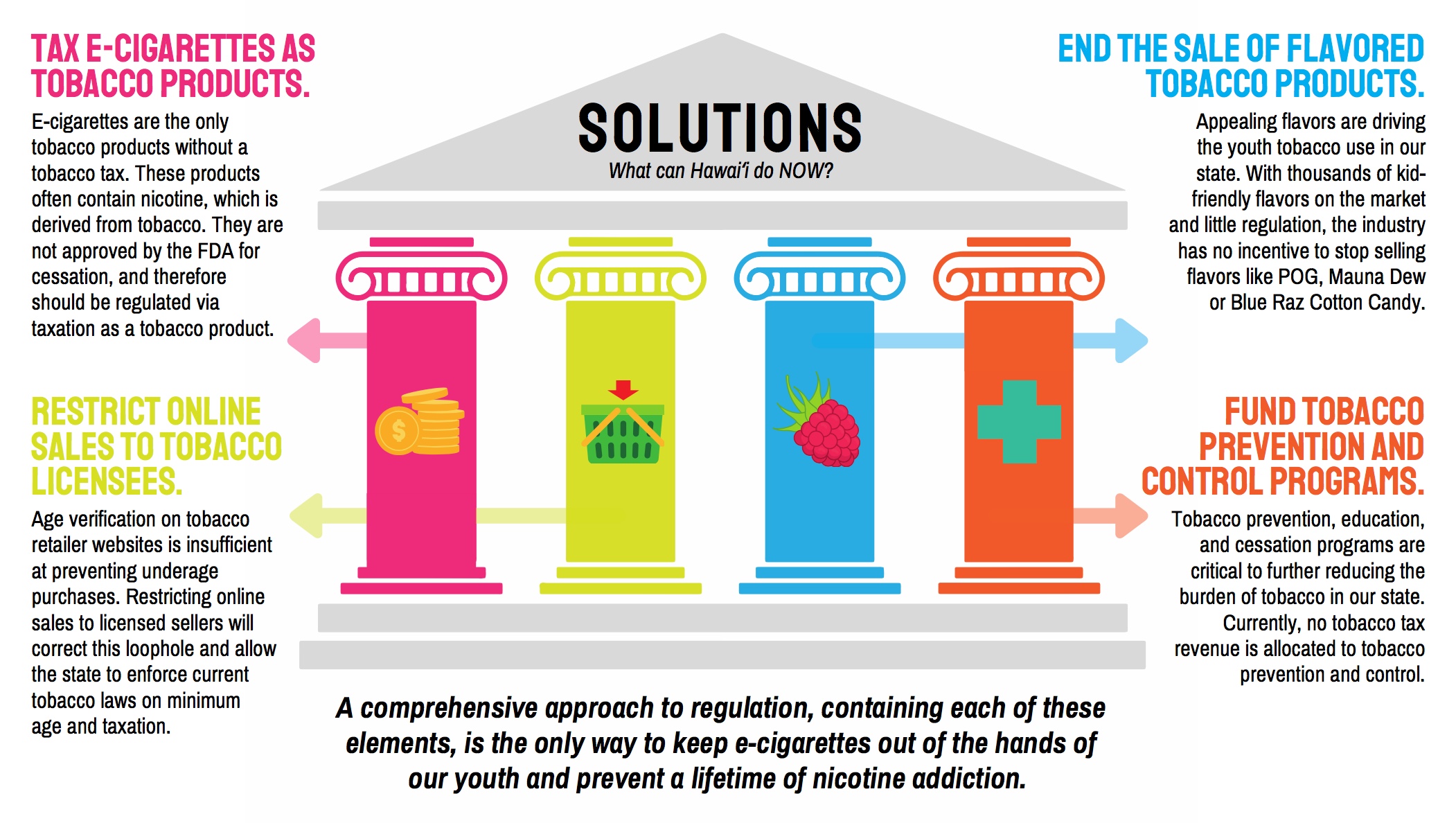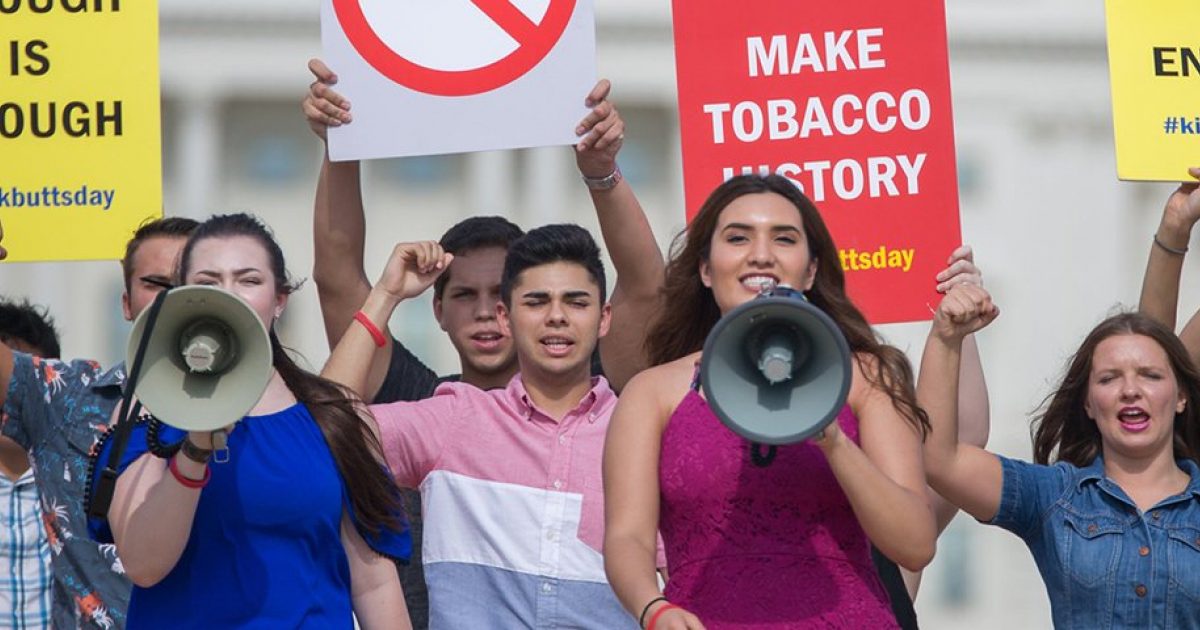Editor’s note: This post was written by Christine Russo, a science teacher at James Campbell High School on Oahu. She is also a Leeward Chapter state director for the Hawaii State Teachers Association, and parent and teacher organizer for Campaign for Tobacco-Free Kids.
As schools resume in-person instruction on campus, the Campaign for Tobacco-Free Kids and Hawaii Public Health Institute urge educators to join the fight against Hawaii’s youth vaping epidemic.
Youth ages 13 to 24 who vape are five times more likely to be diagnosed with the coronavirus, according to research conducted by Drs. Shivani Mathur Gaiha and Bonnie Halpern-Felsher of Stanford University and Dr. Jing Cheng of University of California, San Francisco. Youth who vaped and smoked cigarettes in the past 30 days are seven times more likely to test positive for the coronavirus, and these youth were also five times more likely to express symptoms of the virus once contracted, the study concluded.
Researchers say there are a number of potential reasons for the connection, including a common practice of sharing vape products and engaging in hand-to-mouth behavior, and the damaging effects of vaping on the lungs and immune system.
If students who use e-cigarettes are more likely to contract COVID-19, then the risk of spreading the disease on school campuses increases even more when these students return and re-engage with fellow vapers. This puts the health and safety of the entire school community in jeopardy.
How you can help
There are a number of actions you can take, both big and small, to be a part of the solution.
Watch the Vaping Prevention for Teachers webinar to learn about different tools and tactics from local experts including:
- Dr. Bryan Mih, a pediatrician and director of the Kapiolani Smokefree Families program;
- Kevin Ramirez, Hawaii Public Health Institute youth ESD (electronic smoking devices) prevention project coordinator; and
- Mitzie Higa, HSTA government relations specialist.
Educate youth on the dangers of vaping and the long-term consequences of addiction by:
- Hosting an 808 NoVape presentation at your school to educate youth on the dangers,
- Delivering evidence-based lessons to students using curriculum from the Stanford Tobacco Prevention Toolkit or Scholastic’s The Real Cost of Vaping, and
- Encouraging students at your school to get involved with Hawaii Public Health Institute’s Youth Council.
Connect with the Campaign for Tobacco-Free Kids and Hawaii Public Health Institute for additional support and resources.
You can also join the community effort to stop predatory practices by large tobacco companies and urge lawmakers to pass effective legislation by sharing how youth vaping has impacted you, both in and out of the classroom. If you would like to share your manaʻo and advocate for such measures, please sign up here.
The struggle to curb youth vaping
Raising the price of e-cigarettes and e-juices through increased taxation, removing flavored tobacco products from the market, and regulating their online sales are all considered effective tools for curbing usage among youth. Unfortunately, efforts to regulate the industry through state legislation have consistently stalled over the years. The only bill related to youth vaping that passed the 2019 legislative session, Senate Bill 1405, put the onus on teachers by requiring them to confiscate e-smoking devices and imposed fines of $100, penalizing the very victims of the vaping industry. Gov. David Ige ultimately vetoed the bill.
Related Story: HSTA applauds governor's intent to veto bill on e-cigarettes in schools
The confiscation of vaping devices and e-liquid products by teachers is not a highly effective tool in tackling the youth vaping epidemic, nor does it prevent fellow students and teachers from the risk of exposure to second- and third-hand vaping chemicals and nicotine. According to the FDA, e-cigarettes and e-liquids can pose a threat to human health and to the environment if they are not disposed of properly.

Infographic courtesy Hawaii Public Health Institute. Featured image courtesy Campaign for Tobacco-Free Kids.
To learn more about these solutions and how to reduce youth vaping, visit the Campaign for Tobacco-Free Kids website.

